I've just started looking into M-V-VM for a WPF application. Everything makes sense so far besides this particular issue...
I have a ViewModel I'll call Search. This ViewModel binds to a datagrid and lists results of items. Now, I have a command that needs to bring up another view, the item's details.
Putting the logic to show another view in the Search View doesn't seem right, it's not testable at all.
Here is my ViewModel implementation, which is not testable...
public class SearchViewModel
{
public void SelectItem()
{
// I want to call the DetailsView from here
// this seems wrong, and is untestable
var detailsView = new DetailsView();
detailsView.Show();
}
}
Where does the logic to show a view from a ViewModel method go in this pattern?
